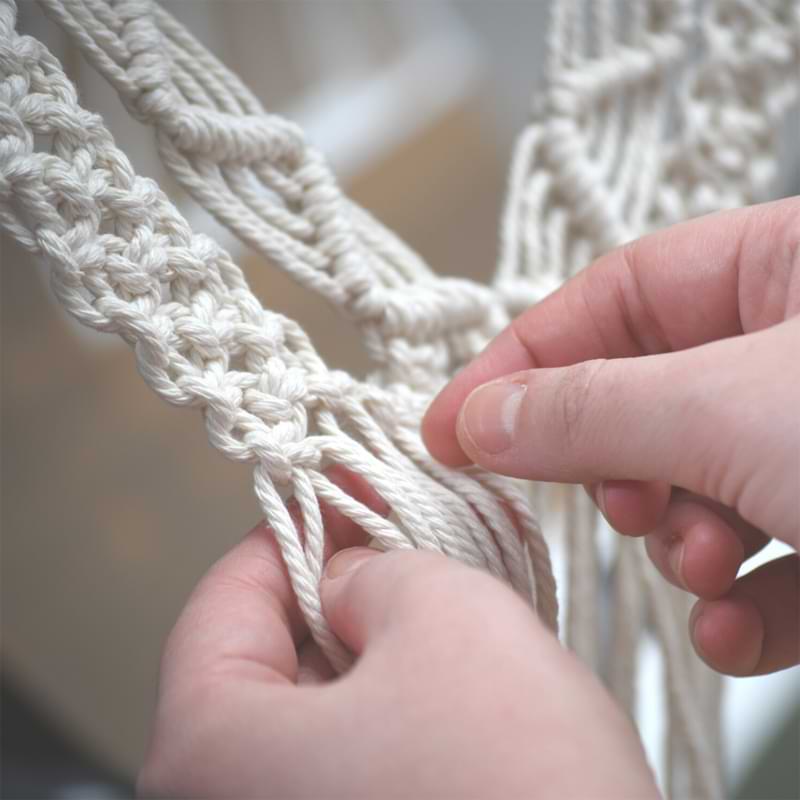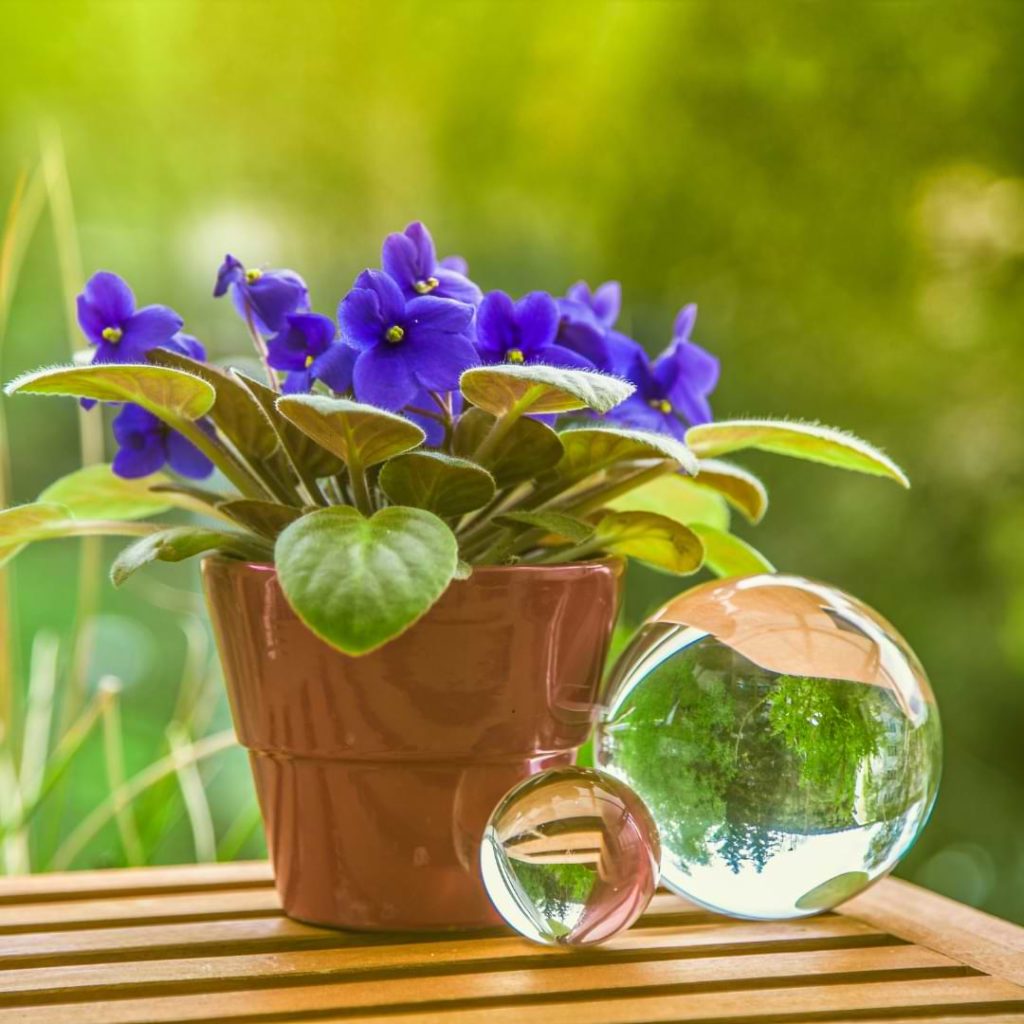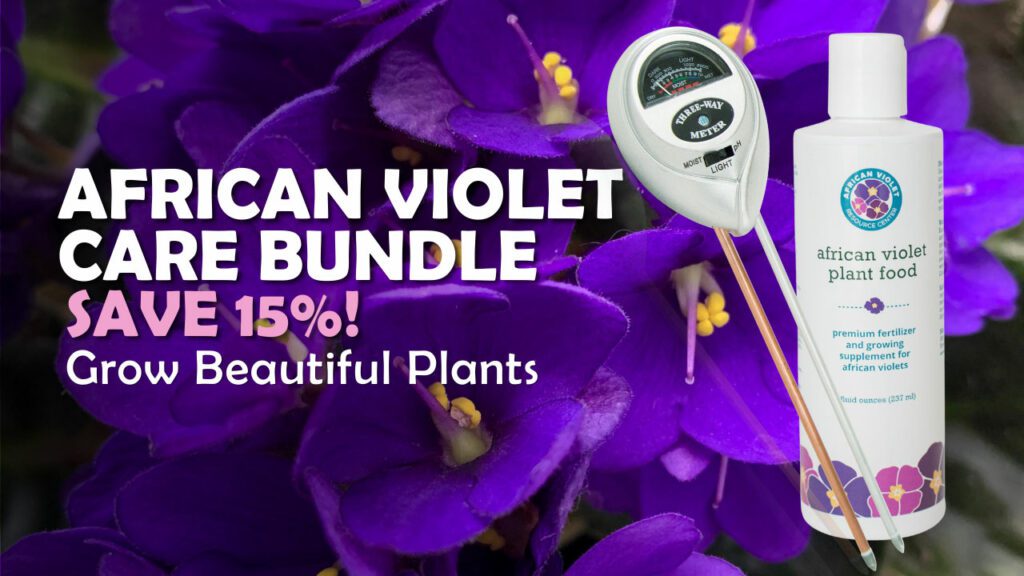Most African violet lovers start off with one or two African violets that they display in a window. As your collection of African violets grows, you’ll probably run out of spaces to place your African violets pretty quickly. There are a wide variety of plant stands available to help solve this problem and show off your African violets.
Besides the plant stands for African violets, another aspect of displaying this beloved houseplant is the pots you choose to place your African violets in. If you want your African violet collection to look its best, you need attractive pots. The plastic containers that African violets usually come in don’t exactly showcase these plants’ beauty.
However, when it comes to choosing pots, you have to think about appearance as well as function. Certain types of pots help African violets thrive while other types hinder their growth.
Keep reading to find out how to choose the best plant stands and pots to display your collection of African violets.
Best African Violet Plant Stands
The size of your collection and the layout of your house influences which African violet plant stand is the best for showing off your lovely collection. These are a few of our favorites in each category to help you pick out which option is best for you.
Plant Stand Display Cabinet
A grouping of African violets all in the same cabinet highlights their unique traits and creates a beautiful focal point in your home.
- Convenience Concepts 5-Tier Glass Tower: If you have a limited footprint available for displaying your African violets, this tower is the perfect option. It’s easy to put together, only takes up 11.75″ x 15.75″ of floor space, and with five tiers, there’s still plenty of room to display lots of African violets. Most people who order this cabinet end up liking it so much that they order a second for another area.
- Augosta 3-Tier Wood Plant Stand: If you have more space available, this large three-tier plant stand looks stunning in front of a sunny window. The A-frame design makes it a unique focal point and draws attention to your plant collection. You may need a second pair of hands to help with assembly, but it’s worth it for the combination of quality materials and sturdy construction.
Plant Stand With LED Lights
African violets are fairly easy to care for, but they won’t produce beautiful blooms if they don’t get enough sunlight. Depending on your home’s layout, it can be difficult to give African violets adequate access to light year-round. Plant stands with LED lights make it easy to supplement natural light with artificial light. Then you can keep your African violets blooming even if you have very little natural light in your home.
- Monios-L Plant Shelf With Grow Lights: This four-tier stand, with plenty of room for an impressive collection of African violets, is a great way to show off your collection while also providing enough light to create optimal bloom conditions. There are a fair number of parts to assemble, but once you finish assembly, the durable stand with grow lights will help your plants thrive.
- Grow Light Strips: Plant stands with LED lights included can be expensive. If you’re up for the DIY approach, adding LED grow lights to an existing plant stand can make your plant-collecting hobby easier on your wallet. These easy-to-install grow lights come with a timer that allows you to set how long the lights are turned on for each day.
Tiered Outdoor Plant Stand
African violets aren’t generally kept outdoors because they do so well in normal indoor conditions in most households. However, outdoor plant stands tend to be very durable and able to hold up under less-than-ideal conditions. You can always use outdoor plant stands both indoors and outdoors, but you can only use indoor plant stands inside, so it may be worth getting outdoor plant stands if you want a versatile option.
- Bamworld Plant Stand: This indoor/outdoor plant stand has plenty of room for a large African violet collection. With 11 shelves, this stand looks equally beautiful on a balcony or in a living room. The tiered shelves have many pieces to assemble, but the end product is beautiful and perfectly suited to showcasing your African violets.
- FEISIER Plant Stand: For smaller collections, this metal plant stand creates a delightful display. There is only room to display three plants, but the charming design makes this the perfect accent piece.
- Bamworld Plant Stand – 7 Potted Ladder Plant Holder: This bestseller plant stand has room for a medium African violet collection. The alternating height tiers draw attention to your collection. It takes some effort to assemble, but the result is beautiful.
Wall-Mounted Plant Stand
When you don’t have a lot of floor space, wall-mounted plant standards are a great solution. Wall-mounted stands bring your plants to eye level, making them easier to admire. Just be sure that you mount the stand somewhere it will get decent lighting year-round since these are harder to reposition than free-standing plant stands.
- Wall-Mounted Outdoor Plant Stand: These space-saving shelves are the perfect size for a small African violet collection. There’s also a bar that allows you to hang other objects underneath the shelves.
- 6-Inch Flower Pot Holder: With a minimal, functional design, these ring wall-hanging brackets keep the focus on your African violets. The rings come in a set of four, and you can attach them to the wall in any arrangement that suits the space. These versatile holders are a great choice for any space.
- 3-Tier Hanging Planter Shelf: Perfect for any space, this hanging tier planter has three shelves that hold three plants each for a total of nine plants. The jute ropes and natural wood create a bohemian style.
Hanging Baskets for African Violets
Finding hanging baskets for African violets can be tricky. As you’ll read later in this article, African violets do best in very specific-sized pots, and it’s not always easy to find hanging baskets in the correct size. A great solution is to find the pot you want to use first, then purchase a macrame hanger to hold the pot.

3-Pack Macrame Plant Hanger: This pack of three macrame plant hangers has three different sizes to accommodate different-sized pots. The woven design, available in both beige and ivory, is a lovely vintage-inspired look.
Window Box
African violets do not grow well outdoors in most areas of the U.S. Unless you live somewhere that mimics the African violet’s native tropical environment in East Africa, we do not recommend placing African violets in window boxes.
African violets can be outdoors during warm weather, but they prefer temperatures between 60 to 80 degrees Fahrenheit. Planting African violets in window boxes would make it too difficult to bring them indoors when the temperature drops.
Best Type of Pots for African Violets
Choosing the correct pot for your African violets matters because it affects how much water the soil holds on to. You should always make sure that you select a container with drainage holes for your African violets; otherwise, excess water will collect at the bottom of the pot and potentially cause the roots to rot.
That still leaves you with a vast array of choices for containers. Here are the different options.
Self-Watering Pots
Self-watering pots can work well for African violets that are mature and well established. However, since African violets can handle their soil drying out between waterings, it isn’t absolutely necessary to use self-watering pots. If you already have a habit of watering your plants regularly, self-watering pots are probably unnecessary for African violets. They’ll survive even if they go a few extra days beyond their normal watering schedule.
Plastic Pots
Plastic pots are long-lasting and keep the soil from drying out too quickly. They also come in a variety of sizes, so you’ll be able to find one that’s just the right size for your African violet regardless of whether you have a miniature, semi-miniature, standard, or large variety.
Ceramic Pots
Ceramic pots are usually very attractive. However, it isn’t always possible to find ceramic pots in exactly the right size. Also, for some reason, ceramic pots sometimes lack drainage holes. If you find a ceramic pot you love that isn’t ideal for your African violet, consider planting the African violet in a plastic pot and then slipping the plastic pot into a slightly larger ceramic pot. You can remove the plastic pot when it’s time to water. The rest of the time, you can enjoy the decorative look of the ceramic pot.
Clay Pots
Clay pots can be used for African violets, but they aren’t our first recommendation. Clay pots tend to allow the soil to dry out quickly. You’ll have to monitor African violets in clay pots more carefully, but it is possible to use them if you love the look of terracotta pots.
Best Pot Size for African Violet Plants
For quick reference, these are the typical pot sizes for different-sized varieties of African violets. As the African violets grow and get larger, you might find that you need to increase the pot size.
- Miniature: 2″
- Semi-miniature: 3″
- Standard: 4″
- Large: 6″
How Do You Show African Violets?
African violets can survive in normal household conditions, but to have the most attractive African violets, you’ll need to put in a little extra care. Providing enough light for African violets to bloom over and over is usually the hardest part of growing African violets. Therefore, your first concern when displaying African violets should be providing enough light. Once you have that figured out, you can put effort into displaying them in an aesthetically pleasing way.
Best Position for African Violets
African violets need many hours of bright, indirect sunlight. The best place to position African violets is in a window that faces north or east. Rotate the plants slightly once a week to keep one side from growing toward the light more than the other sides. During the winter, make sure your African violet is not too close to the glass when temperatures are cold. The cold can quickly damage the plants before you notice the problem. You may also need to use grow lights during the winter to provide extra light if needed.
Potting African Violets for Maximum Growth
With African violets, the size of the pot can influence how well the plant grows. However, a larger pot doesn’t mean an African violet will grow larger; in fact, the opposite is usually true.
Here’s why that is.
Why Pot Size Matters
When an African violet’s pot is too big, the roots do not reach all the soil, and the excess soil holds on to too much water. This reduces the air circulation to the roots and creates conditions that are favorable for root rot and fungus.
The correct pot size is one that has a diameter of about one-third the diameter of its leaves. This means that an African violet with leaves that are 12 inches in diameter would grow best in a pot with a 4-inch diameter.
If you are able to find a pot that is wider than it is tall, that’s also better for your African violet. Their roots tend to grow out more than they grow down, so shallower containers better accommodate this growth. You can still use standard pots if that’s all you have available.
Change Soil Regularly
Since African violets are grown in such small pots, they use up the nutrients in the soil fairly quickly. For this reason, it’s important to change the potting soil regularly each time you repot your plant. Refreshing the soil helps your African violet thrive.
Only Repot When Root-Bound
Repotting regularly is good, but repotting too often can stress your African violet. The general rule is to repot around twice a year. However, this depends on how quickly your African violet grows—you’ll need to repot less frequently if your African violet doesn’t grow as quickly. Watch your African violet’s root system; if the roots are growing out and around the root ball, then your African violet is becoming root-bound and it’s definitely time to repot.
Join the African Violet Club!
Whether you’re just starting out or are a seasoned grower, African Violet Resource Center has everything you need to help your plant grow vibrant and strong. Explore our other articles, visit our online shop, and connect with other houseplant lovers in our Facebook group to learn everything you need to know about this rewarding hobby!
More Great African Violet Resources
A Beginner’s Guide to African Violets Houseplants
6 Reasons Your African Violet Won’t Bloom and How to Fix Them







